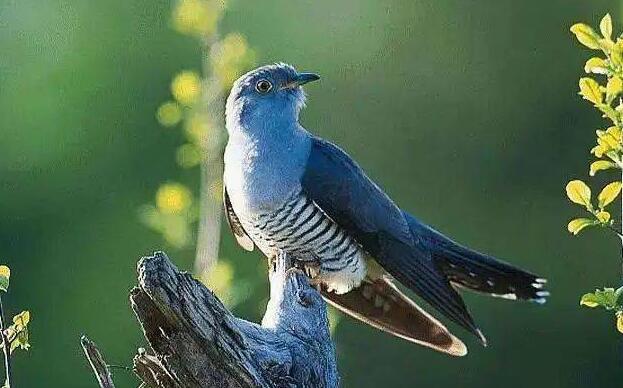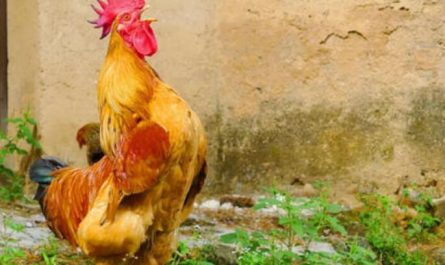The reason why cuckoo birds keep calling
Rhododendron is a general term for birds of the cuckoo family, mainly rhododendron, three-tone cuckoo and four-tone cuckoo. One third of rhododendrons have nest parasitism. It belongs to forestry beneficial bird. There are many poems and songs about Dujuan, the most typical allusion is the story of Wangdi transforming Dujuan. Rhododendrons live in densely-vegetated places. They are timid and often lose sight of their sounds. The body length varies. Golden cuckoos (Chrysococcyx and Chalcites) are 16 cm (6.5 inches) long, and ground cuckoos can be 90 cm (36 inches) long.
Most species are grayish brown or brown, but a few species have obvious auburn or white spots. Most or part of the golden cuckoo is bright emerald green. The body size of the cuckoo is similar to that of a pigeon, but it is slender, with a dark gray upper body and horizontal spots on the abdomen. The feet have four toes, the two toes are forward and the two toes are backward. The flight was rapid and silent. Before and after the awn species, you can hear its loud and somewhat desolate call almost day and night, and the call is characterized by four sounds once-“Cuckoo Cuckoo, Cuckoo Cuckoo”. About two-thirds of cuckoos, including all North American species, build nests and feed their young birds; only about 35% of cuckoos raise young birds by parasitic methods. Most of them live in the woods of tropical and temperate regions.
The reasons why cuckoos call day and night are as follows:
1. It is about to lay eggs, wailing when it is difficult to give birth
2. It wants to attract the opposite sex to mate, so it calls out “a beautiful voice”
3. Its children are gone, hope to retrieve them by sound;
4. Its lair was destroyed, very angry and angry
Introduction of Cuckoo
Rhododendron bird is the general name of the cuckoo family. The common cuckoo, three-tone cuckoo and four-tone cuckoo are common. The big cuckoo sounds like “cuckoo, cuckoo”, so it is called cuckoo; the three cuckoo calls are like “Mi Guiyang”, so in some places it is called Mi Guiyang; the four cuckoos are also called Zigui, and the birds call like “Quickly fast” Cut the wheat”, “cut the wheat and cut the valley.” Rhododendron feeds on insects and is a famous forest beneficial bird. For example, other birds like pine caterpillars and tussock moths dare not eat them, but it is a delicacy for cuckoos.
Most of them live in the woods of tropical and temperate regions. About two-thirds of cuckoos, including all North American species, build nests and feed their young birds; only about one-third of cuckoos raise young birds in a parasitic way.
Nest parasitism is a special breeding behavior in which birds lay their eggs in other bird’s nests, hatching and brooding by righteous parents. The meadow pipit (Anthus pratensis) shown in the photo is fed with rhododendron, which is an interspecific nest parasitic type. Big cuckoo is an existing nest
The most typical bird among more than 80 species of parasitic birds, it can parasitize eggs in the nests of 125 other bird species.
Nest parasitic behavior is manifested in the choice of host. Rhododendron looks for hosts that are similar to hatching and brooding periods, have basically the same feeding habits of chicks, and are easy to imitate in egg shape and color. Most of them are passerine birds. In terms of parasitism time, Rhododendron cuckoo usually spawns eggs quickly when the host leaves the nest before the host starts to hatch. At the end of spring and early summer, they flew north. It doesn’t know how to make nests, nor does it incubate eggs. It lays 2-10 eggs per year on average, but puts the eggs in the nests of thrushes and reeds to let these birds hatch carefully for themselves. And every time it flies into a nest, it produces only one.
The co-evolution of nest parasitism is manifested in the morphological characteristics of host eggs. There is no significant difference in the color and size of the eggs of the parasites. At the same time, the host’s ambiguity in distinguishing eggs is also an aspect. It has an impact on host reproduction. Rhododendrons often remove one egg from the host before laying eggs, or push them all out of the nest, forcing the host to re-lay eggs. Once the nest-parasitic chicks hatch, it pushes the righteous relatives’ chicks out of the nest, thereby exclusively nurturing the righteous relatives, which reduces the success rate of reproduction for the host.






